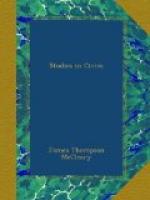The mode of selecting petit jurors is in general the same as that pursued in selecting grand jurors. The “list of persons qualified to serve” is, however, usually larger. The “selection by lot” is made thus: slips of paper, each containing one of the names, are folded and deposited in a box. The box is shaken, and the prescribed number of slips is drawn. The persons whose names thus appear are summoned as jurors.
When an action is called for trial by jury, the clerk draws from the jury box the ballots containing the names of the jurors, “until the jury is completed or the ballots exhausted.” If necessary, the sheriff under direction of the court summons bystanders or others in the county to complete the jury. Such persons are called talesmen.
To secure an impartial jury, each party may object to or “challenge,” a number of the jurors. The challenge may be “peremptory” or “for cause.” The peremptory challenge, as its name implies, is one in which no reason need be assigned. The number of such challenges must, of course, be limited. In civil suits it is usually limited to three by each party. In criminal cases, the state has usually two peremptory challenges and the defendant five. If the offense is punishable with death or state prison for life, the state has in Minnesota seven peremptory challenges and the defendant twenty.
Challenges for cause may be either general or particular. A general challenge of a proposed juror may be made on the basis of his incompetency or unworthiness to act in such capacity in any action. A particular challenge may be based on some bias in this particular case which would unfit the proposed juror for rendering an impartial verdict.
Habeas Corpus.—Not connected directly with trials but related to the district court is the writ of habeas corpus. This is the most famous writ in law, and has been styled “the chief bulwark of liberty.” It was designed originally to secure a person from being detained in prison without due process of law, and it served as a mighty check upon arbitrary power. Its operation has been extended so as to include any detention against the will of the person detained. The writ, as will be seen by reference to the appendix (p. 290), commands the person holding another in custody to bring him before the judge and show cause for the detention. If the judge finds that the prisoner is detained for cause he remands him to custody; if not he orders his discharge.
Concluding Remarks.—This discussion might easily be continued. Volumes have been written on the administration of justice. But perhaps enough has been given to show that great care is taken to protect the interests of the innocent and to do equal and exact justice to all. In view of flippant remarks sometimes made regarding courts of justice, it is pertinent and proper to go at least so far into detail. The study of Civil Government will have been pursued to little purpose if respect for law be not one of its fruits.




